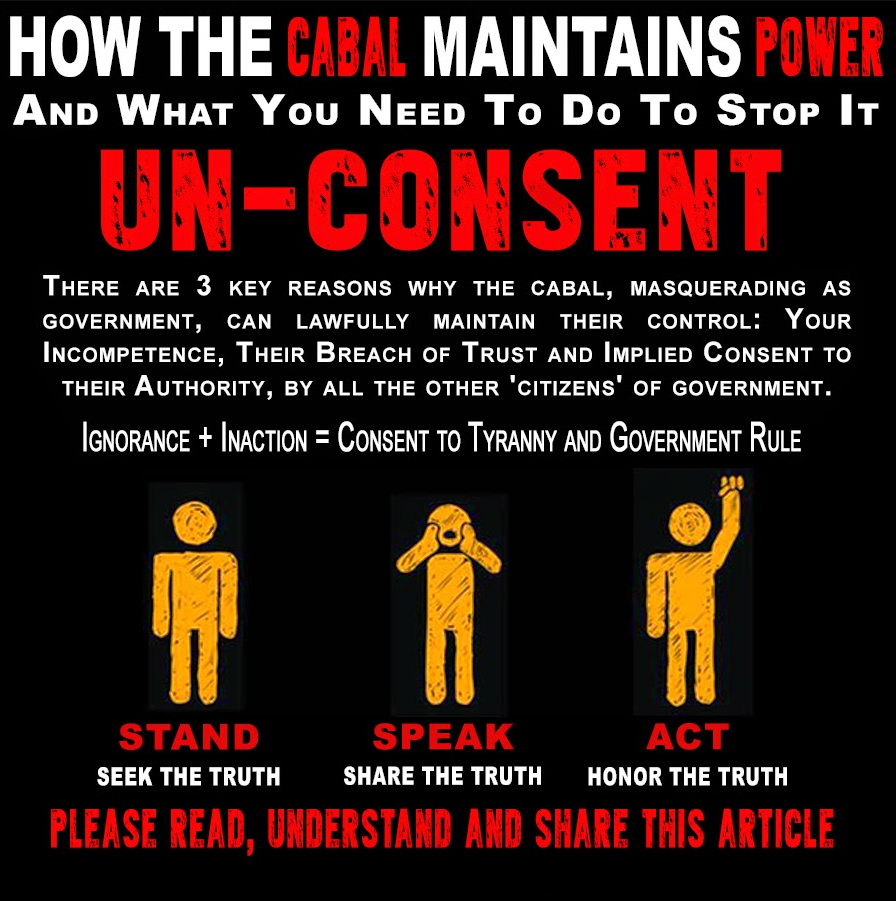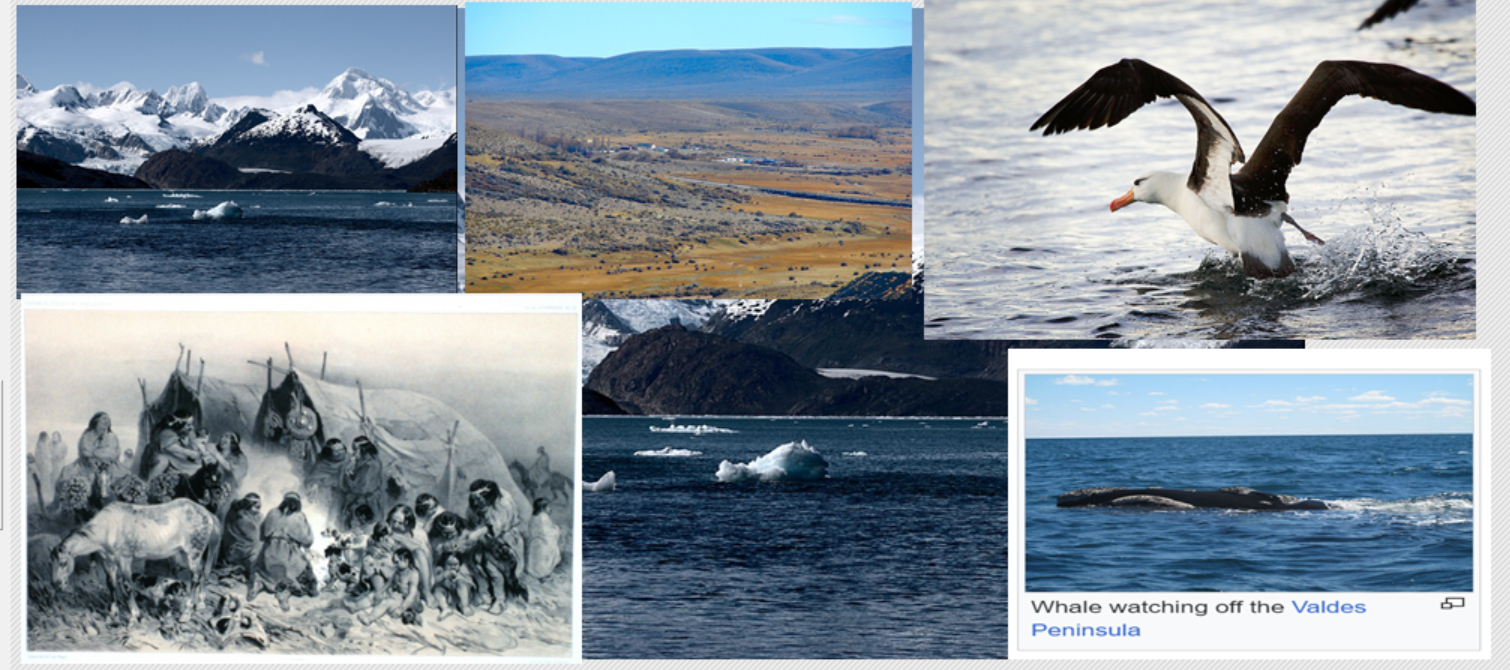Brother's and sisters.....
You simply CANNOT continue doing what you have always done,
and expect to be free, and expect for your children / grandchildren to be free!
It's just that simple!
You and your ENTIRE BLOODLINE will die as #Slaves if you fail to STAND UP
and remove yourself from your VOLUNTARY position of a SLAVE under
"Maritime Admiralty Law"
It's 110% VOLUNTARY to remain under the #Jurisdiction of Maritime Admiralty Law
It REQUIRES your consent! Or your ignorance!
Our True Relationship to Government
There are 3 key reasons why the cabal masquerading as government can lawfully maintain their control: Your Incompetence, Their Breach of Trust and Implied Consent to their Authority, by all the other ‘citizens’ of government.
I have not read this article as of yet....
But the graphic is spot on!
You MUST comprehend that your "CONSENT" is not only REQUIRED.....
But it must also be completely VOLUNTARY!
YOU cannot enter into legally binding CONTRACTS without your own knowledge!
But the criminals will claim that you can!
YOU had best learn the "Law" and stop falling into the SCAM of Implied Consent
or any of their other maritime admiralty law SCAMS!
EDUCATE YOURSELF and stop allowing people to tell you
what you have "consented to," and START CHALLENGING THEIR CLAIMS!!!
However.... If you enjoy being PROPERTY of a corporation, essentially their SLAVE...
Then you just keep doing what you've always done... And you WILL die a slave
https://geopolitics.co/2015/04/05/how-the-cabal-maintains-their-power/
You simply CANNOT continue doing what you have always done,
and expect to be free, and expect for your children / grandchildren to be free!
It's just that simple!
You and your ENTIRE BLOODLINE will die as #Slaves if you fail to STAND UP
and remove yourself from your VOLUNTARY position of a SLAVE under
"Maritime Admiralty Law"
It's 110% VOLUNTARY to remain under the #Jurisdiction of Maritime Admiralty Law
It REQUIRES your consent! Or your ignorance!
Our True Relationship to Government
There are 3 key reasons why the cabal masquerading as government can lawfully maintain their control: Your Incompetence, Their Breach of Trust and Implied Consent to their Authority, by all the other ‘citizens’ of government.
I have not read this article as of yet....
But the graphic is spot on!
You MUST comprehend that your "CONSENT" is not only REQUIRED.....
But it must also be completely VOLUNTARY!
YOU cannot enter into legally binding CONTRACTS without your own knowledge!
But the criminals will claim that you can!
YOU had best learn the "Law" and stop falling into the SCAM of Implied Consent
or any of their other maritime admiralty law SCAMS!
EDUCATE YOURSELF and stop allowing people to tell you
what you have "consented to," and START CHALLENGING THEIR CLAIMS!!!
However.... If you enjoy being PROPERTY of a corporation, essentially their SLAVE...
Then you just keep doing what you've always done... And you WILL die a slave
https://geopolitics.co/2015/04/05/how-the-cabal-maintains-their-power/
Brother's and sisters.....
You simply CANNOT continue doing what you have always done,
and expect to be free, and expect for your children / grandchildren to be free!
It's just that simple!
You and your ENTIRE BLOODLINE will die as #Slaves if you fail to STAND UP
and remove yourself from your VOLUNTARY position of a SLAVE under
"Maritime Admiralty Law"
It's 110% VOLUNTARY to remain under the #Jurisdiction of Maritime Admiralty Law
It REQUIRES your consent! Or your ignorance!
Our True Relationship to Government
There are 3 key reasons why the cabal masquerading as government can lawfully maintain their control: Your Incompetence, Their Breach of Trust and Implied Consent to their Authority, by all the other ‘citizens’ of government.
I have not read this article as of yet....
But the graphic is spot on!
You MUST comprehend that your "CONSENT" is not only REQUIRED.....
But it must also be completely VOLUNTARY!
YOU cannot enter into legally binding CONTRACTS without your own knowledge!
But the criminals will claim that you can!
YOU had best learn the "Law" and stop falling into the SCAM of Implied Consent
or any of their other maritime admiralty law SCAMS!
EDUCATE YOURSELF and stop allowing people to tell you
what you have "consented to," and START CHALLENGING THEIR CLAIMS!!!
However.... If you enjoy being PROPERTY of a corporation, essentially their SLAVE...
Then you just keep doing what you've always done... And you WILL die a slave
https://geopolitics.co/2015/04/05/how-the-cabal-maintains-their-power/
0 Comments
0 Shares
127 Views











